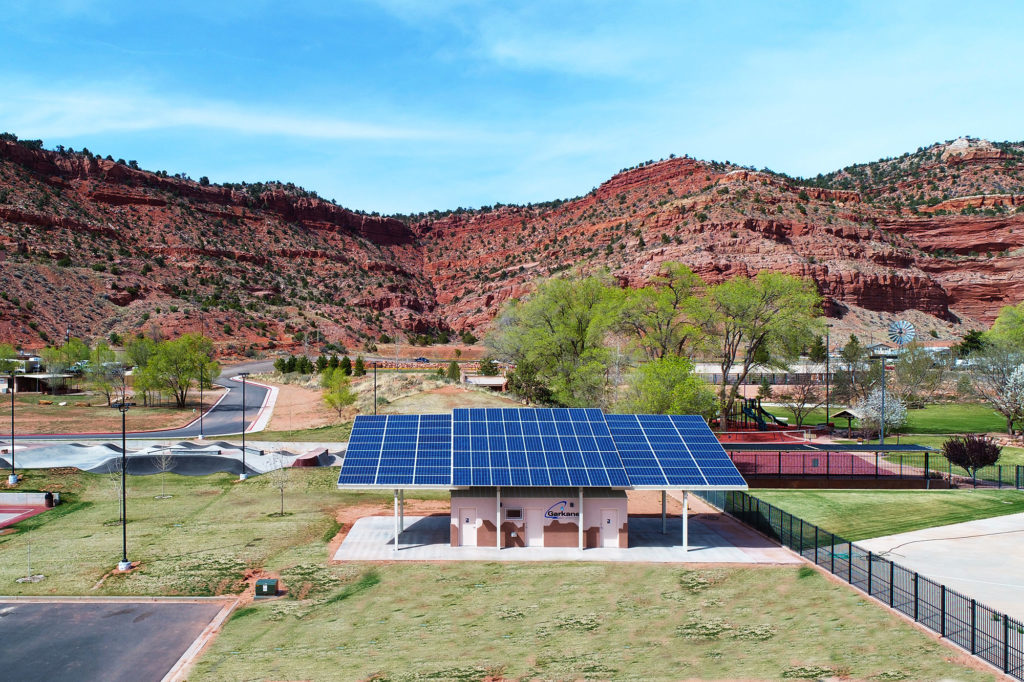
A Utah electric cooperative is producing solar power in one of the most scenic areas of the United States, without detracting from the signature vistas that draw tourists and filmmakers to the region.
And the rooftop array making that possible could be a model for similar projects where aesthetics are important and community resources are limited.
“We’ve helped the city of Kanab create a shaded performance space where people can gather for outdoor entertainment,” said James Clegg, an energy adviser with Garkane Energy, headquartered in Kanab. “It publicizes our commitment to renewable energy without taking up available parkland.”
That’s because the array is over the roof of a 35-foot-by-70-foot pavilion, more than 20 feet above ground. The solar panels generate about 33 kilowatts of electricity for the co-op, which offers it to members willing to pay a small monthly premium for renewable energy.
Kanab, located just north of the Arizona state line, is close to nearly a dozen national parks and natural monuments, including the southern rim of the Grand Canyon. More than 100 feature movies, from iconic westerns to science fiction classics, have been filmed in the area. Locations in the vicinity have also been used for dozens of television series.
“Instead of blocking the view of a national park or taking up space on our high desert landscape, we’re producing power on a site used for community entertainment,” said Clegg.
The co-op built the pavilion and erected the rooftop solar array with assistance from its generation and transmission cooperative, Deseret Power Electric Cooperative, headquartered in South Jordan, Utah.
The city of Kanab provided the space and constructed support facilities related to the project. Garkane Energy has plans to build at least two similar projects in other communities it serves. The $130,000 project took about two years from concept to completion. Co-op officials expect others to be completed quickly.
“Many of our communities don’t have a lot of facilities, so projects like this can provide renewable energy for our members, and also help them make improvements,” said Clegg.
The solar panels were planned right into the design of the amphitheater, allowing the array to enhance the acoustics for the audience, Clegg said. “You can hear conversations on the stage from the hillside with little or no amplification.”
Derrill E. Holly is a staff writer for NRECA.